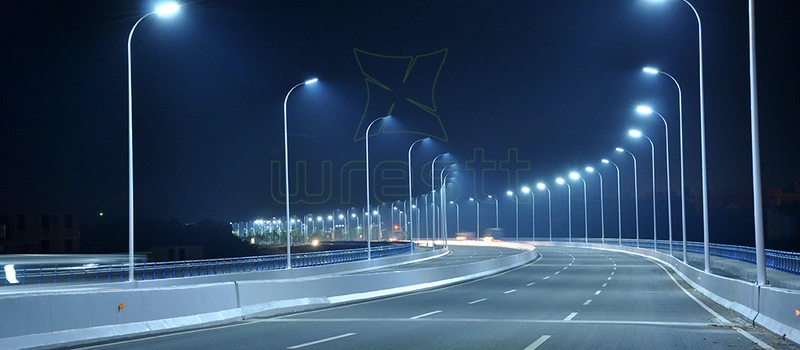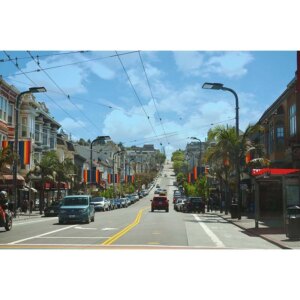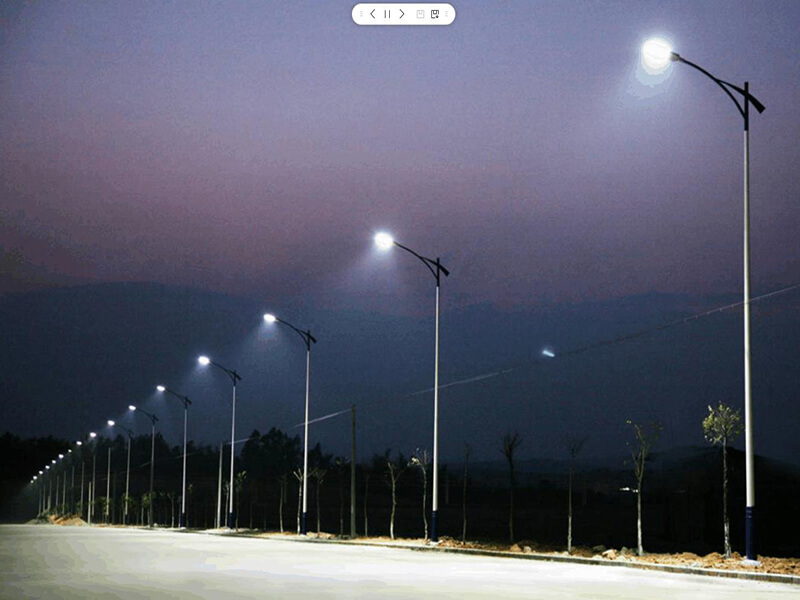Introduction:
For centuries, the concept of street lighting has remained a vital aspect of urban living. As one of the things that are impossible to overlook, streetlights play an important role in public security and beautifying the environment. In the modern world today, it is easy to overlook the great significance of street lights. After all, since they are found in nearly every pathway, their existence is commonplace and are innovations that should exist. Still, have you never wondered about the history of these lights? About who invented street lights? And just when were street lights invented? In this article, we will provide an overview of the history of street lights.
When were Street Lights Invented?
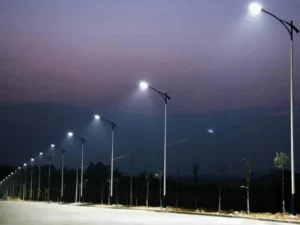
Early Beginnings: Lighting the Path
The idea of lighting dark streets and public areas dates to ancient civilizations (China, Greece, and Rome). The available forms of lighting were natural sources of light, such as the moon. These early societies also relied on fire to illuminate their paths, using candles and oil lamps to navigate the darkness.
The first civilization to possibly use fixed-position lighting was Ancient China in 500 B.C. The inhabitants of Beijing would use hollow bamboo pipes and naturally occurring gas vents to create street lights.
In ancient Rome, artisans would craft oil lamps from clay and infuse a wick made of cotton or flax. This wick would then control the movement of the oil to the flame and contribute to the lamp’s illumination. In this epoch, the wealthy folks of ancient Rome used oil lamps to brighten their villas. They had slaves called lanternarii who were responsible for lighting, inspecting, and quenching the flames. These primitive lamps lit the dark Roman streets and are the earliest street light inventions in historical records. Their primary purpose was safety-based, as they would protect people from tripping in the dark and ward off muggers.
As time passed, cities during the Middle Ages employed a combination of torches and lanterns to illuminate their streets. Residents would soak dry wood in oil to light the torches. And they create lanterns using glass or metal to house oil lamps and brighten the surrounding areas.
Public Street Lights: The 1417 London Decree

Before the era of electricity emerged a pioneering moment in street lighting history.
In the City of London in 1417, the then Mayor, Sir Henry Barton, initiated a decree that required the residents to place burning oil lanterns outside their homes after sunset during the winter. This innovative measure was the city’s first organized street lighting system to ensure well-lit and secure spaces.
Fast forward to 1745, when repolished oil lanterns lit the streets of Paris, and 1757 when Benjamin Franklin introduced them to the USA. The good Sir Franklin invented the street lights of the United States. He created his version using the glass globes in London as a template. His design of an oil candle surrounded by a four-panel glass house allowed air to enter the housing through the bottom crevices and smoke to leave through the pipes above. This re-envisioned invention was then used to brighten the streets of the USA.
Reaching a Turning Point with Gas Lighting

The question “When were street lights invented?” has no single or precise answer. The history of street lighting occurs throughout the annals of human civilization, with brilliant minds laboring to perfect the technology with multiple revisions.
One such mind is a Scottish engineer named William Murdoch, who invented gas lighting in the late 1700s. The first demonstration of the gas light was in 1792 when William used the lights in his home. Not long after, he took a step further to light the main building of Soho Foundry using his invention in 1798. Afterward, as a public presentation, William Murdoch used his coal-powered gas light to illuminate the front of Soho Foundry in 1802. London celebrated the new century by utilizing this innovation to create its first gas-powered street five years later.
The USA soon joined the movement to mount gas lights on the streets of Baltimore in 1816. Four years later, Paris, in hot pursuit, followed the movement to attain a more dependable and consistent form of illumination.
Electric Arc Lamps in the City of Lights
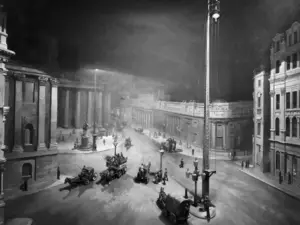
Yablochkov’s demonstration of his brilliant arc lights at the 1878 Paris Exposition along the Avenue de l’Opéra triggered a steep sell-off of gas utility stocks. Paris, not to be outdone by its peers, revolutionized streetlighting in 1878 after using the “Yablochkov candle” in a lamp post. This new technology used the power of alternating current between carbon electrodes to ensure that both electrodes burned at equal rates, thus generating an intense burst of light.
Soon after, in 1881, 4000 Yablochkov candles were already in use and soon replaced the old gas lanterns. However, the electric arcs had two major drawbacks. First, the light from the electric arc lamp is harsh and intense. They were indispensable at industrial sites but proved too uncomfortable in the city streets. The other disadvantage is that since carbon electrodes burn swiftly, electric arc lights are high maintenance and short-lived. These two downsides contribute to the disposal of electric arcs as street lights at the end of this century.
Swan and Edison’s Incandescent Light Bulb
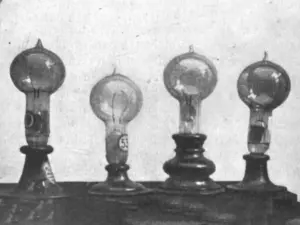
The electric revolution marked the end of the 19th century. Brilliant minds like Sir Joseph Swan and Thomas Edison are two figures who greatly impact the history of street lighting and even present-day lighting systems. Sir Swan and Thomas introduced their incandescent bulbs to the public in 1879. But the distinguishing factor between both products is that Edison found a way to create a pure vacuum inside his bulbs. As a result, Thomas Edison’s carbon thread incandescent bulbs became the lamp of choice for homes and street lights alike.
His bulb could top the competition because of a combination of three things that made it economically practical; a highly effective incandescent material, a larger vacuum, and higher resistance.
Modern Advancements
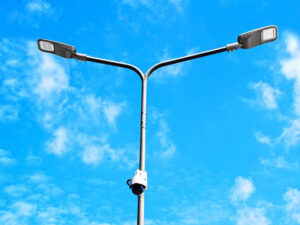
Like every innovation in human history, streetlights continue to advance as they illuminate our homes, landmarks, and streets. The different street lights invented – from the era of hand-held torches to incandescent lighting, lay the foundation for urban lighting systems.
In the 1930s, European cities saw the creation of low-pressure sodium lamps, which were soon replaced by high-pressure sodium (HID) alternatives in 1965. Low-pressure sodium lamps possess a removable outer jacket and vacuum layers for insulation. This allows the lamps to maintain a high temperature while keeping the sodium in vapor form. HIDs follow the same principle but are more efficient than low-pressure sodium lamps. They also have excellent color execution, making them a suitable lighting choice for streets worldwide. The most significant competitor of high-pressure sodium lamps are LED lamps, which existed in 1962. The inventor Nick Holonyak Jr. created streetlights with unmatched energy efficiency, a long life span, and customizable light settings.
Conclusion:
Can you answer who invented the streetlight now? Street lights have a long development history, and their invention cannot be attributed to a single individual or moment. Overall, the invention and evolution of street lights were a gradual process involving multiple inventors and technological advancements over many centuries.


